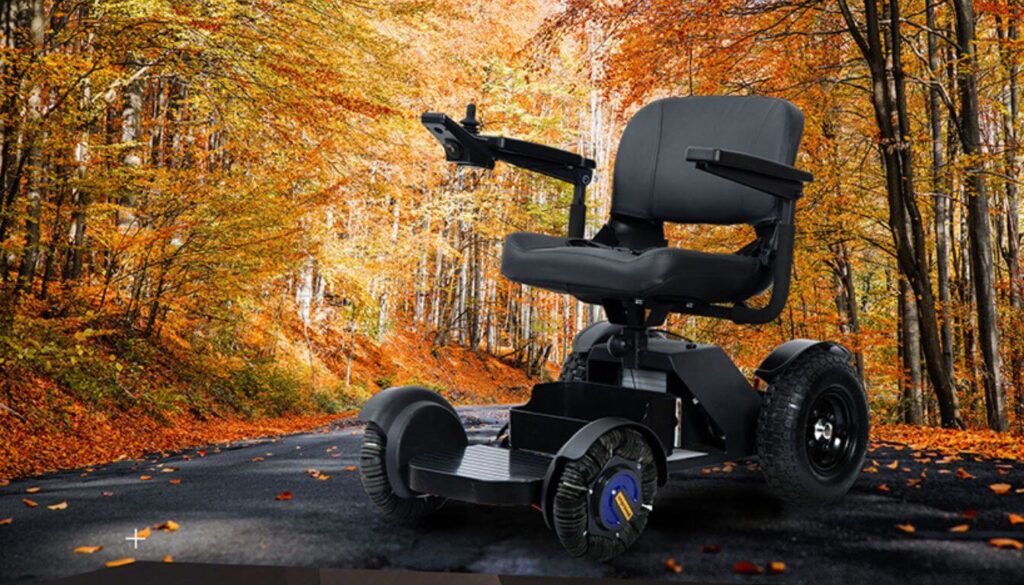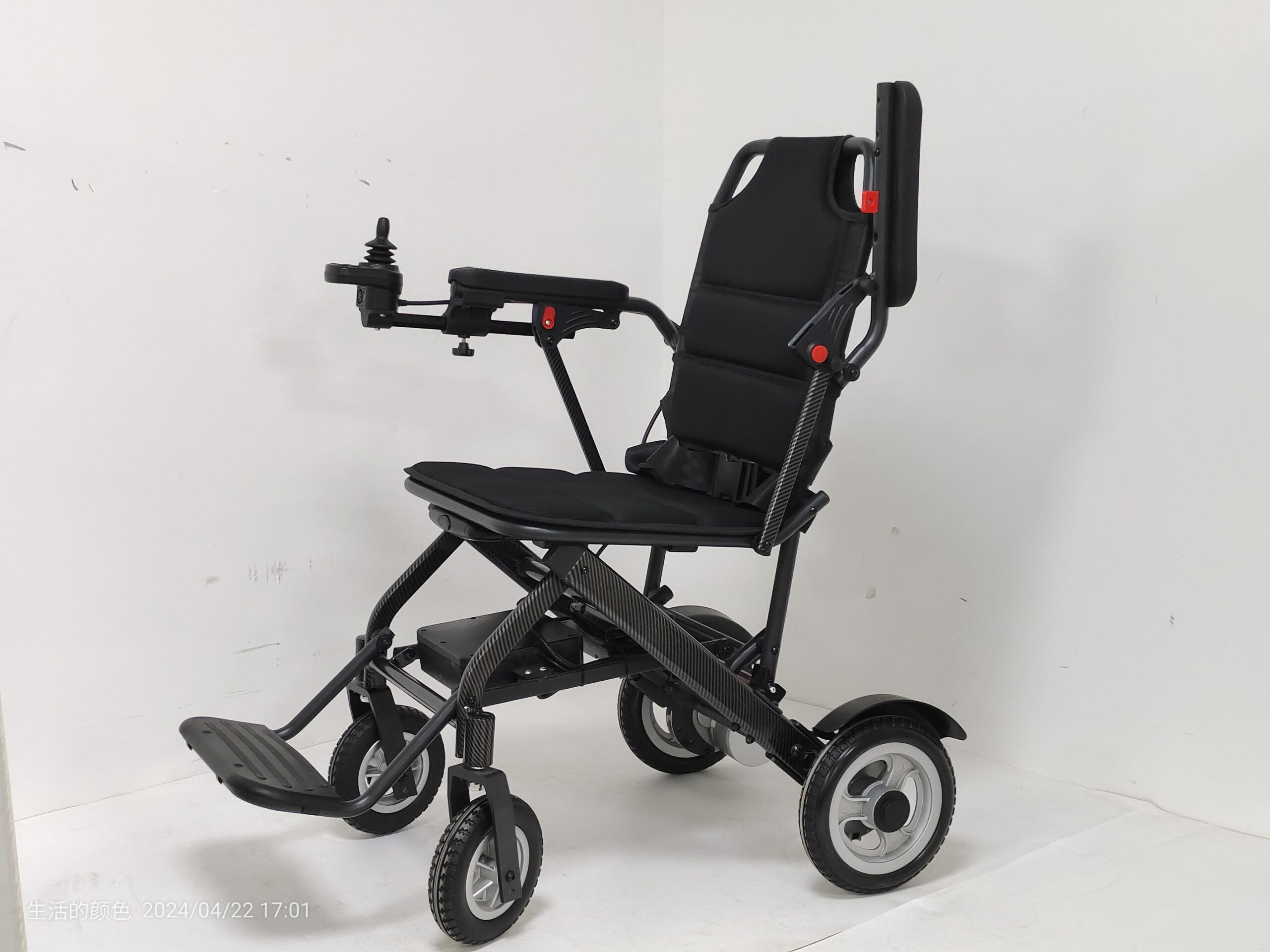Finding the right wheelchair for adults can be a daunting task, but I recognize the importance of finding one that fits perfectly, much like finding the ideal pair of comfortable shoes.
Through my own experience, I discovered that the seat width is not just about comfort; it plays a crucial role in maintaining mobility and overall health.
With my knowledge in this area, I can guide you through the process and help you choose a wheelchair that not only fits your body but also aligns with your lifestyle.
Together, we will work towards achieving a new level of freedom in your daily life, step by step or should I say roll by roll!
Determining the Right Wheelchair Size
Navigating the world of wheelchairs can be daunting, but finding the perfect fit is crucial for comfort and mobility. Before you dive into the vast array of options, it’s essential to understand how to measure for a wheelchair that feels just right—it’s like tailoring a suit; every dimension matters for that custom-fit sensation.
Seat width
Choosing the right seat width in a wheelchair is like picking out the perfect pair of shoes; it has to fit just right. For most adults, a standard wheelchair is about 17.5 inches wide.
This size fits through a door that’s 32 inches wide—the usual size for doors. But we’re not all built the same, so wheelchairs come in different widths too. If you’re slimmer or larger, you might need a chair that’s anywhere from 20 to 25 inches across.
My role is to guide you toward finding that snug spot where comfort meets function. Imagine having enough room to relax without feeling squeezed in—but also not so much space that you’re sliding around! It’s essential because it affects your posture and how easy it is to move about.
With armrests sitting at just the right height, usually between 11 and 15 inches off the seat, your body gets supported right where it needs it most.
Overall chair height
The right chair height makes all the difference for wheelchair users. It’s not just about being able to reach things—it also affects comfort and safety. The armrest should sit 22.5-25cm above the seat, letting arms rest without strain.
This setup helps prevent shoulder pain and supports good posture.
Your overall chair height factors into navigating under tables or through doorways comfortably. Think about your daily routine before settling on a chair size; that way, you can ensure the fit allows for easy movement around home or office spaces.
Remember, an electric wheelchair often sits higher due to battery assistance underneath, so make sure to account for that extra space needed!
Types of Wheelchairs and Their Sizes
When it comes to wheelchairs, variety truly is the spice of life. From sleek and agile sports models to robust electric powerhouses, each type of wheelchair comes in distinct sizes tailored for diverse lifestyles and needs—ensuring comfort goes hand-in-hand with mobility.
Manual wheelchairs
Manual wheelchairs come in different sizes to fit all body shapes. They’re made for people who can move themselves or have someone help them. You’ll find the seat width is key for comfort and should match the widest part of your body when seated, often your hips.
For most adults, manual wheelchairs measure 16″, 18″, or 20″ wide.
The height of a wheelchair matters too. It affects how easy it is to get in and out of the chair. Most armrests are between 11 and 15 inches high — this helps keep you from slouching and straining your back.
Wheelchair access isn’t just about fitting through door frames; it’s also making sure the chair fits you right!
Electric wheelchairs

Electric wheelchairs come in various seat widths to suit adults. The sizes often range from 16 inches to 20 inches. Getting the right fit matters a lot. If your electric wheelchair is too tight or too broad, it can be tough to move around and might even be uncomfortable.
These motorized chairs change how we need to set up our homes and live our lives. You may need more room to turn or wider doorways in your house for easy access. Electric wheelchairs empower many people, giving them independence they might not have with other mobility aids.
They do require charging and some maintenance, but the freedom they offer is worth it for users needing support daily.
Transport wheelchairs
I’ve used transport wheelchairs on many trips and can say they are a game-changer. These chairs are designed to be light and easy to move around. They’re perfect for zipping through airports or squeezing into tight spaces.
With various sizes available,for most adults, transport wheelchairs measure 16″, 18″, or 22″ wide. They fit different body types and weights without a problem. The best part? You can fold them up quickly, and some even have removable footrests—talk about handy! And when it comes to comfort, adjustable armrests make sure you’re sitting just right.
You’ll find that these transport wheelchairs aren’t just convenient; they’re durable too. Their weight capacity varies to support all sorts of users safely. Whether I’m heading out for an appointment or enjoying a day at the park, my transport wheelchair handles it with ease—and fits right into the car when I’m done! It’s clear why anyone who needs medical equipment would go for one of these nifty chairs—they truly make getting around so much easier.
Sports wheelchairs
Sports wheelchairs boost performance and prevent injuries. They are light, fast, and designed for specific sports like basketball, rugby, or tennis. These chairs let athletes move quickly and turn sharply during a game.
The size of a sports wheelchair matters a lot. It must fit the player’s body just right to play their best.
You can get your sports wheelchair customized. The seat width and backrest height can change to fit you perfectly. This helps with your posture and comfort while competing. Players need chairs that meet the rules at accessible sports events too.
It ensures fair play for everyone involved in the sport.
Factors to Consider When Choosing the Right Wheelchair Sizes for Adults
When I’m hunting for the perfect wheelchair, it’s like piecing together a puzzle—every dimension and detail matters to fit my unique needs. It goes beyond just snug seating; contemplating factors such as body proportions and daily activities ensures that my choice in chair doesn’t just sit there, but actually enhances my life.
Body weight and height
I always double-check my body weight and height before picking a wheelchair. Standard wheelchairs are made for folks under 300 pounds. If you weigh more, no worries—there are extra-wide options just for you.
You’ll want to measure the widest part of your body while sitting down; it’s usually the hips.
It’s not just about fitting into the chair comfortably; seat height is vital too. Your feet should rest flat on the ground without squeezing your thighs under the armrests. Think about where you’ll go in your wheelchair and what kind of barriers you might face—the right fit can make all the difference!
Activities and terrain
Choosing a wheelchair means thinking about where you’ll go and what you’ll do. Some chairs are great for indoors and smooth floors. Others handle rough ground and outdoor adventures better.
If I like sports, I might want a sturdy sports wheelchair.
Wheelchair accessible paths are important too. Chairs that fit through standard doorways help me move around more easily inside buildings. But if doors at home or work are narrow, a slim transport wheelchair could be the way to go—it slips through tight spots without trouble.
Accessibility needs
I make sure my wheelchair can go where I need it to. Accessibility is key. Ramps must be the right size, according to ADA requirements. This means they have a gentle slope that’s easy for me to use.
The ADA accessibility guidelines help places know how to make spaces easier for wheelchairs.
I also check door widths in my home and office. They should be wide enough for my chair to get through without trouble. Sometimes I add grab bars or lower counters so I can reach things better in my wheelchair.
The world isn’t always set up for wheelchairs, but with good planning, I can make most spaces work for me. It’s about taking control of where and how I move around—whether at home, work or out having fun!
FAQs and Useful Information
In the FAQs and Useful Information section, I’ll be addressing those nagging questions you might have about wheelchair sizes and sharing some handy tips to make life with your new chair a breeze.
Whether it’s diving into the specifics of standard wheelchair dimensions or discovering the most practical ways to ensure your environment is wheelchair-friendly according to ADA standards, this part of our journey together promises clarity and empowerment for your daily experiences.
Keep reading—because knowledge is power, especially when it comes to navigating life on wheels with confidence!
Standard wheelchair dimensions
Wheelchairs come in different sizes, but let’s talk about the common ones. A standard wheelchair seat is usually between 16 and 20 inches wide which works well for many adults. The total width often measures around 28 inches.
This size fits through a door that’s 32 inches wide, just like most doors based on the Americans with Disabilities Act.
Now, armrests matter too! They typically range from 11 to 15 inches high. It’s important because your arms need to be comfortable while you’re in the chair. Whether it’s manual or motorised wheelchairs we’re considering, these numbers help make sure you get the right fit for comfort and easy movement through spaces.
How to find the right wheelchair size
I need to choose a wheelchair that fits me just right. It’s important for comfort and movement.
- Measure across the widest part of my body while seated. This tells me the seat width I need.
- Add a little extra space for any cushions or supports I might use.
- Check the armrest height to make sure it doesn’t cause back pain.
- Look at power wheelchairs if I want something that moves on its own.
- For manual options, make sure the overall chair height suits my body size.
- Consider transport wheelchairs if I’ll often get help from someone else.
- Think about sports wheelchairs if I’m active and love games like basketball or tennis.
- Take into account how much I weigh and my height. Most chairs are built for people under 300 pounds.
- If I weigh over 300 pounds, search for an extra – wide model.
- Remember terrain and activities—some chairs handle rough ground better than others.
- Make sure the chair will go through doors in my home. The standard is about 28 inches wide.
- Consult with ADA guidelines to ensure proper accessibility in public spaces across the contiguous United States.
Best practices for wheelchair accessibility
I’m always looking out for ways to make places more welcoming for wheelchair users. Wheelchair accessibility is not just about removing barriers; it’s about creating an environment where everyone has equal access. Here are some best practices:
- Keep doorways at least 32 inches wide, following the ADA standard.
- Ensure ramps have the proper slope and design to be safe for wheelchairs.
- Ramp it up: Ramps should have a gentle incline. Steep ramps can be dangerous and hard to navigate.
- Smooth surfaces: Floors should be flat and even. This makes it easier for wheelchairs to roll without getting stuck.
- Grab bars help: Install these in restrooms and other areas where extra support might be needed.
- Clear paths matter: Keep aisles and hallways free from clutter. This ensures safe and easy movement around the space.
- Right height counters: In places like stores or banks, lower sections of counters allow someone in a wheelchair to access services easily.
- Accessible restrooms are crucial: These need to provide enough space for a wheelchair to turn around, along with properly positioned grab bars.
- Create designated spots: Have specific areas in parking lots reserved for people who use wheelchairs.
- Signage is key: Use clear signs so wheelchair users know where they can find accessible features.
Contact information for support and sales
If you need help or want to buy a wheelchair, please know we’re here for you. You can contact us via email or phone at your convenience, or visit your nearby medical supply store for additional support.
They understand wheelchairs and the Americans with Disabilities Act (ADA) rules well. You can always count on them for advice and options that fit just right.
Keep in mind, finding a comfortable wheelchair is like picking out the perfect pillow – it’s personal and important. Your health professional or a specialist in mobility aids can guide you through the choices.
Talk to our experts about what you do every day and where you go; they’ll help match you with a wheelchair that makes life smoother.
Conclusion
Finding the right wheelchair size makes a big difference in comfort and mobility. Measure carefully and consider your lifestyle to choose the best fit. Remember, wheelchairs should help you move freely and easily.
Keep your needs and preferences front of mind when looking at options. With this knowledge, you’re ready to find the perfect wheelchair for adult life on the go!









